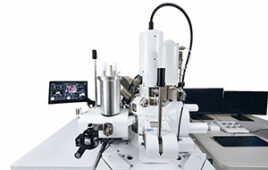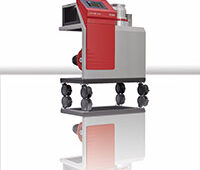Physisorption analysis is used to measure the surface area and porosity of a solid sample. Unlike a simple are measurement of length multiplied by width, physisorption analysis determines the true surface area, taking into account and surface imperfections such as waviness or porosity. This is achieved by exposing the surface to a gas or liquid and observing how the surface adsorbs it. The type of gas or liquid used for physisorption determines the size of pores that can be measured. Such measurements have important applications in quality control for metallurgy and materials science, pharmaceuticals, and nanomanufacturing.
Physisorption, or physical adsorption, is a relatively weak form of adsorption. The other type of adsorption is chemisorption, which involves covalent or ionic bonds. By contrast, physisorption does not interfere with the electronic bonding structures between atoms or molecules. Instead, interaction between a fluid and a solid involves only relatively weak Van der Waals forces.
Physisorption analysers are instruments that perform the physisorption analysis. The process involves the following steps:
- Sample material is weighed and placed in a glass tube with a calibrated volume.
- The samples are then placed in a vacuum or inert gas while being heated to degas and remove contaminants. This process can take several hours with the process depending on the material being measured. This ensures that fluids and oils are not covering the pores, which would prevent accurate surface measurements.
- Sample material is removed from the glass tube, accurately weighed, and placed back into the glass tube. This is the true sample mass. Weighing before and after degassing is also a useful sanity check to verify that contaminants have been removed.
- The sample tube is then fitted to the physisorption analyser which fills the tube with gas, controlling the temperature and monitoring the change in pressure to determine the quantity of gas which is adsorbed. A critical point in the process is where a monolayer of gas molecules as formed which completely covers the surface. Since the volume and the pressure where this monolayer forms can be determined, Brunauer–Emmett–Teller (BET) theory can be used to determine the surface area.





Tell Us What You Think!